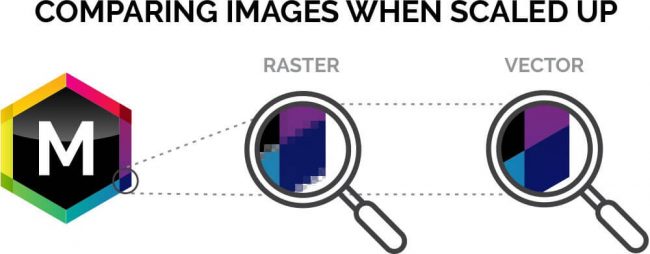

In which situations is it better to use a vector image? Although vector pictures are created using mathematical calculations and are thus excellent for logo design, website visuals, and text, raster images are built of individual pixels, making them perfect for producing realistic drawings. To sum up, the construction of raster and vector pictures is what distinguishes them most from one another. They are also excellent for showing text, curving lines, and intricate geometric forms. Because of the mathematical equations involved in their creation, vector graphics often seem more expert and exact than raster ones. They make it simple to resize photographs to different sizes without sacrificing resolution or quality. As they are made up of several individual pixels, they are extremely simple to modify and edit.įor website logos, icons, and graphics, vector images are often employed. Intricate graphics with patterns like tiling and abstract backgrounds may also be produced using them. Due to this distinction, these picture formats have different purposes and applications.įor producing realistic graphics like pictures, sketches, and paintings, raster images are perfect. Nevertheless, raster and vector pictures vary in that whereas vector images employ mathematical equations to produce shapes and lines, raster images are made up of pixels. Resolutionĭigital art and graphics may be produced using both raster and vector imagery. So, it's crucial to think about what kind of picture would work best for your project. Moreover, raster graphics may distort when enlarged but vector images may be done so without losing any of their quality.

As a result, vector pictures are more adaptable, scalable, and useful for making complex designs. Raster and vector pictures vary most noticeably in that whereas vector images are based on mathematical formulae and forms, raster images are made up of pixels. Both print and digital media may employ vector pictures, and they are simple to transform into other image formats. Also, vector drawings have the benefit of being readily scalable and customizable, which makes them perfect for a variety of applications. As a result, vector pictures are more adaptable and may be scaled to any size without sacrificing quality or resolution. Vector pictures don't have pixels as raster ones do. Illustrations, fonts, and logos are a few examples of vector graphics. Points and paths make up vector pictures, and the paths join the points to create shapes and lines. They are perfect for logos, text, or any design that has to be reproduced in numerous sizes since they are mathematically based and can be scaled without losing quality or clarity. Shapes, lines, and curves that may be adjusted to produce intricate pictures make up vector graphics. Raster pictures are considerably different from vector images, which have a wider range of applications. Large amounts of data may be stored in this kind of picture, which can also be utilized for intricate compositions. Since each pixel is given a little amount of information about its color, which is kept in memory as a row of data known as a bitmap, raster images are also sometimes referred to as bitmap images.

This implies that vector pictures should be utilized if you require a big size print, like a poster, since they can be scaled up simply without losing any quality or sharpness. Raster pictures often have bigger files than vector graphics, and rendering them on a screen might be more computationally intensive. This is due to the fact that a bigger picture needs more pixels in order to faithfully depict the employed colors and forms. This is seen when zooming into a picture or when a tiny image is resized to fill a huge area online. Raster pictures are resolution-dependent, therefore enlarging them beyond their original size will result in pixelated visuals. As a photograph's detail is often too intricate to be replicated using vector graphics, this technique is frequently utilized for images. Raster images are composed of a grid of pixels, each of which has a unique color value. There are a few significant differences to take into account when comparing raster and vector pictures.


 0 kommentar(er)
0 kommentar(er)
